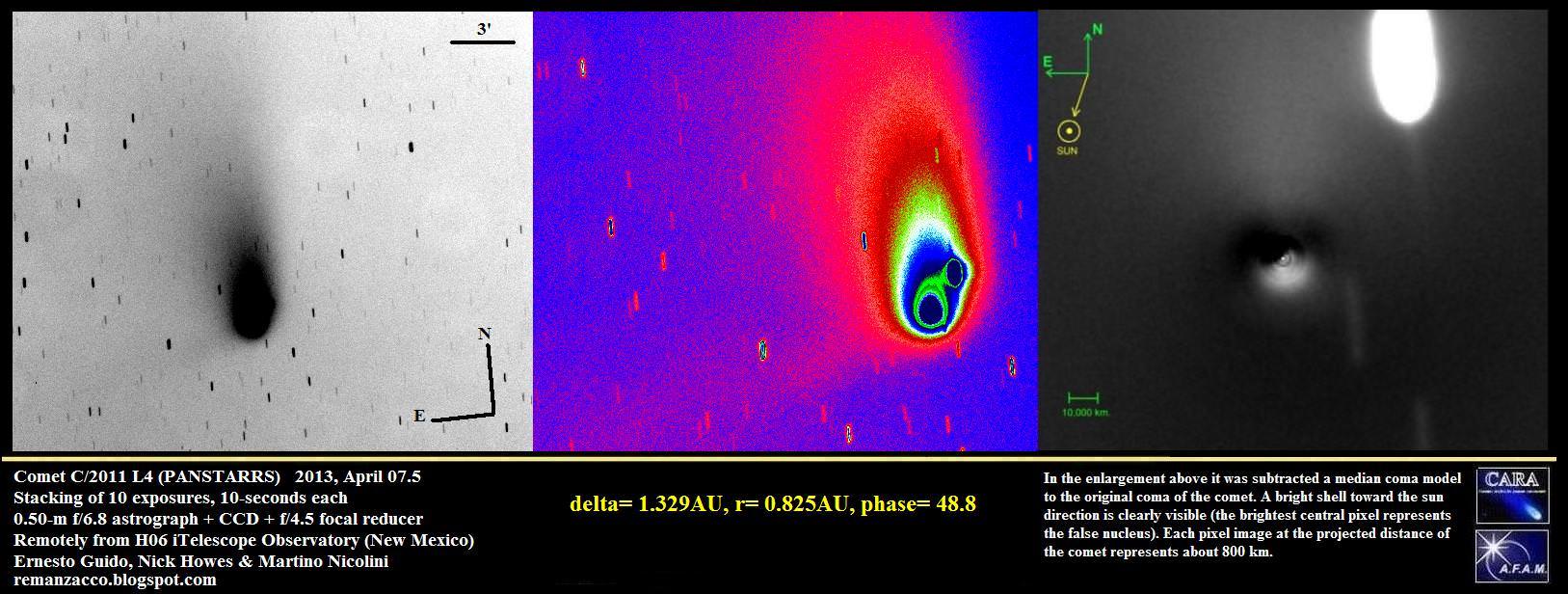Comet PANSTARRS has peaked, but astronomers are still keeping an eye on this comet to try and determine what its future might hold. The team from the
Remanzacco Observatory
has just produced some really interesting views of Comet PANSTARRS, with a little help from Martino Nicolini and his
Astroart software.
Team member Nick Howes called this software "one of the best astronomical image processing and acquisition tools around," and explained how these views can tell astronomers more about what is happening with the comet.
"The isophotes image (color coded) is a good way to see the morphology/structure of the coma," he told Universe Today, adding that comparing the images here is "a very good way to determine any major events like a fragmentation. We're hopeful that once PANSTARRS gets a bit higher, we'll be able to look at it in even more detail with the
2 meter Faulkes scopes.
"
And with the image processing in the image on the far right, it's possible to see a bright shell in the coma of comet C/2011 L4 (PANSTARRS).
"The last elaboration in that image has been obtained using the M.C.M. (Median Coma Model), a filter that has the purpose of creating -- from an image of a comet -- a synthetic model of the 'regular' coma," said Ernesto Guido, from the Remanzacco team. "That is obtained by mapping all the pixels that compose the image and averaging them together. In doing so we delete all the morphological "non-uniformity" contained in the coma itself. This regular coma will then be subtracted from the original image highlighting all the details that are normally immersed in the uniform brightness of the coma."
Check out the
Remanzacco website
for more information and their continued updates.
 Universe Today
Universe Today
